Cao Bang is one of the northernmost provinces of Vietnam. This land is gifted with amazing sceneries and majestic mountains. Most of the province is made up of highlands and mountains, giving travelers the feeling that it’s hard to conquer this land. Cao Bang is also the land of many ethnic minorities, especially Tay and Nung people, which contributes to the characteristics of the culture here. And because of these ethnic people, the cuisine in Cao Bang is very different from other parts of Vietnam, making this region a fun and delicious visit.
Contents
Best Time to Visit Cao Bang
In each season, Cao Bang has a distinct beauty. However, I suggest visiting Cao Bang in autumn. From August to September, you may have a chance to understand the real charm of Ban Gioc waterfall and the magnificent mountains. November and December are a great time to admire the full beauty of the fields of buckwheat flowers and wild sunflowers.
Summer’s heat may irritate you when traveling, it sure irritates me. Nevertheless, Cao Bang offers travelers the unique position to hide from the sun in its immense and green forests. Summer is also the season of the plum, so you can taste this tropical fruit at its most perfect juiciness.
For more details, check out our feature article on When to visit Cao Bang.
Dishes You Shouldn’t Miss When Visiting Cao Bang
Banh Coong Phu
Banh coong phu is a specialty of the Tay and Nung people. According to the Tay and Nung language, the name of this food means the floating cake. The Viet people also have a dish called banh troi nuoc, which has the same meaning and is very similar to banh coong phu in terms of recipe.
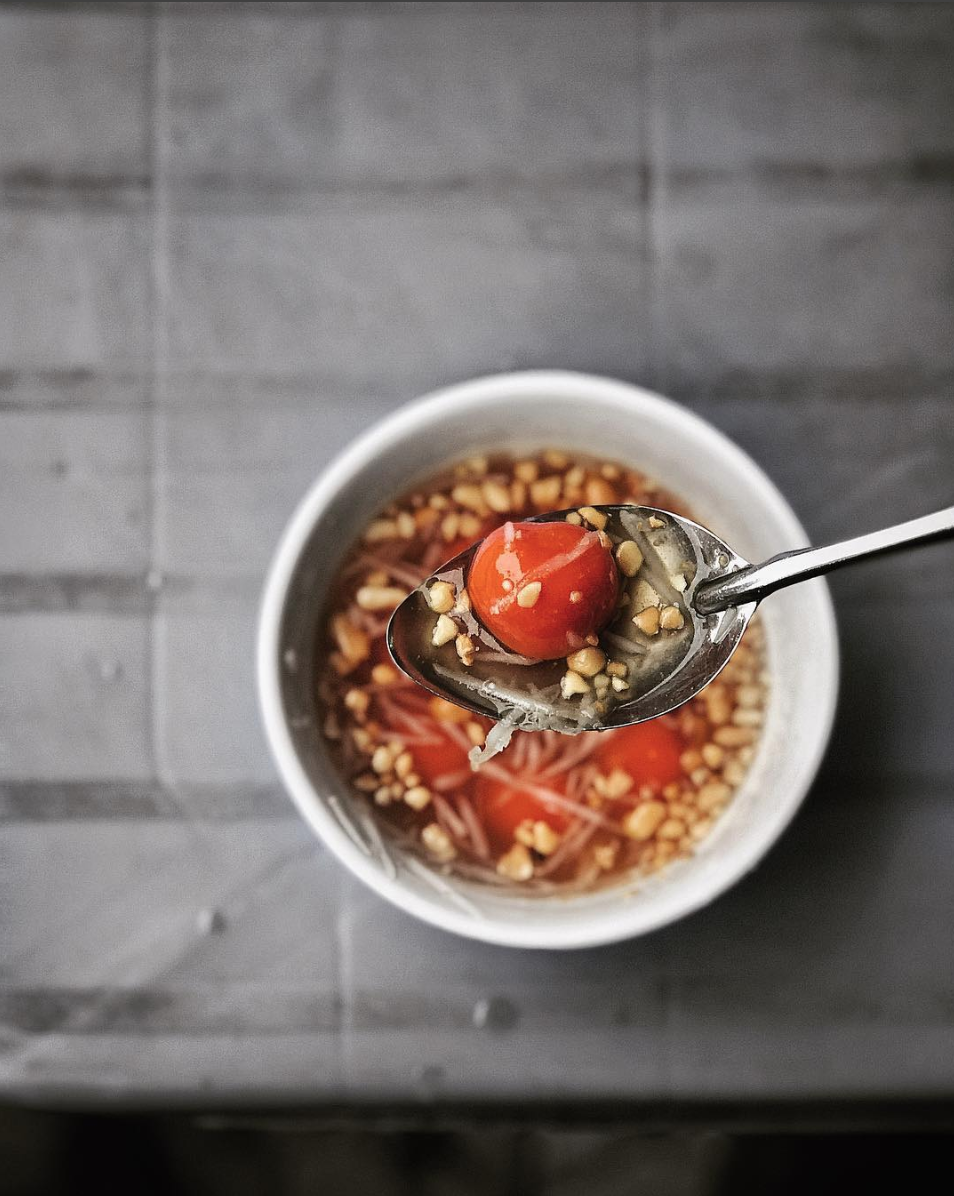
First the cook grinds the rice and mixes it with water. Then, this mixture is dehydrated, made into small balls, and boiled. In banh troi nuoc of the Viet people, you will find mung bean paste inside the balls. But in banh coong phu, locals add roasted peanuts and sugar. Banh coong phu is eaten with dense sugar water boiled with ginger. You can eat this dish as a dessert.
The best time to eat banh coong phu is in the winter. A vendor will put banh coong phu in boiled water and wait until the pieces float to the surface. She will then transfer them to a bowl and pour in the sugar water. Hot banh coong phu will warm you up and the sugar provides much-needed energy to fight against the cold of this high land.
Banh Ap Chao
This is also a dish commonly enjoyed in the winter. You can find banh ap chao sold on streets in Cao Bang in any season, but people prefer to eat it in the cold weather. The main ingredients are very simple: the crust is made of ground rice and the stuffing is duck meat. The outside crust is a combination of ordinary rice, glutinous rice, and soybeans. This mixture sits in water for half a day before it’s ground into flour.
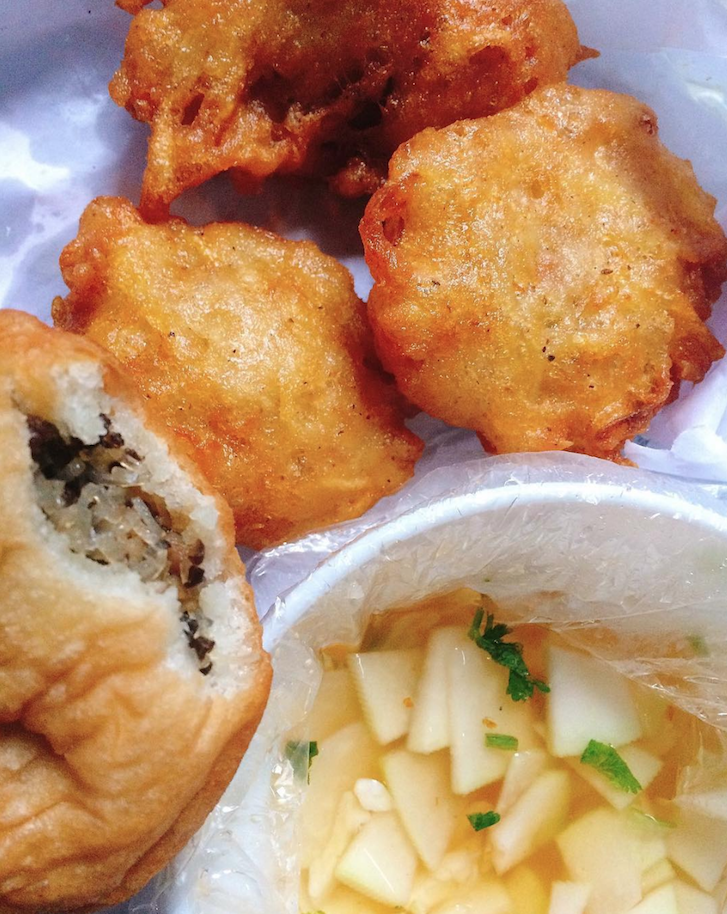
After the mixture is done soaking in the water, the cook will coat the duck meat with it to form a crust. Then, the meat is slowly placed in a pan of boiling oil and fried until both sides are a tasty yellow. The final product has an alluring smell, especially in the winter when it wafts through the air to your nose.
During the cold season, the special smell of banh ap chao pervades every corner of Cao Bang. Because of this, the time between November and February is also called banh ap chao season by the locals.
Banh Trung Kien (Peng Ray)
Banh trung kien is another special food of the Tay people. In the Tay language it is called peng ray, which means ant egg cake. As its name suggests, the main ingredient is ant egg! This cake is usually cooked only in late April and May every year because this is the breeding season of the wild black ant.
The eggs are harvested early in their life cycle and then used to make the stuffing. The stuffing is then covered in glutinous rice and wrapped in roxburgh fig tree leaves.
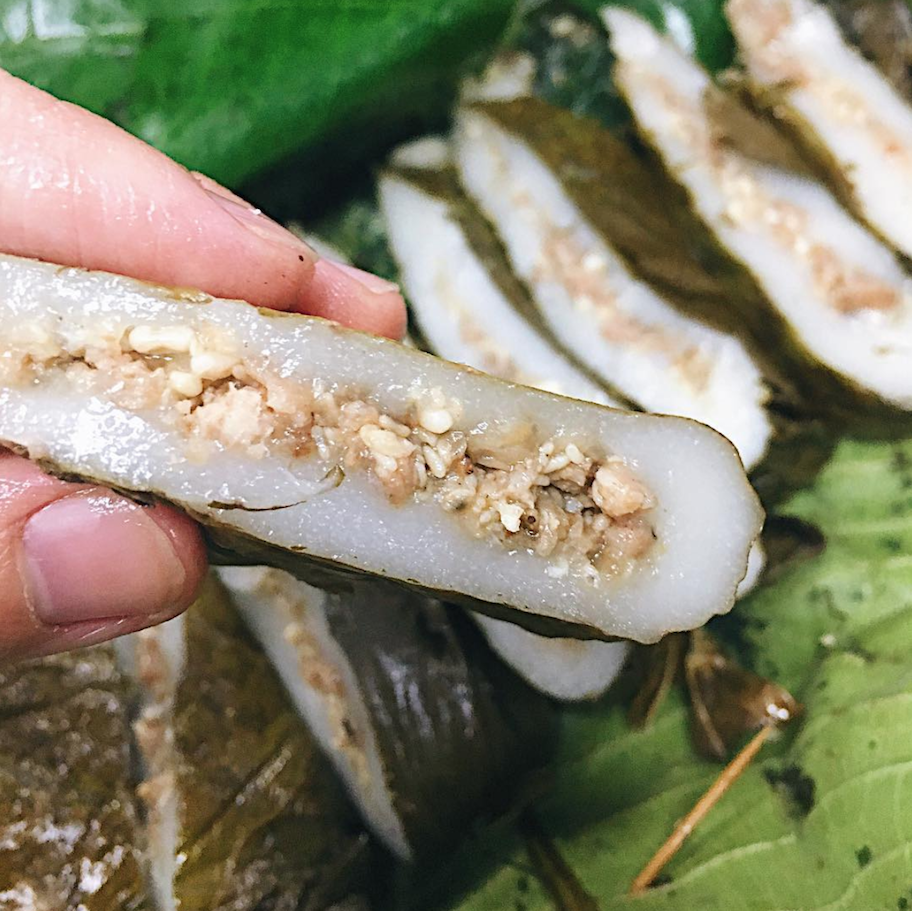
After finding ant eggs in the forest, the Tay will then fry them with onions. Minced meat, ground peanuts, and Oriental onions can also be added to make the stuffing more delicious. The sticky cakes are wrapped in two roxburgh fig tree leaves the size of a hand. You can enjoy this special cake after around 45 minutes of steaming.
Pho Chua
Pho chua literally means sour pho. You are probably very familiar with pho, a famous noodle dish with beef soup, characteristic of Vietnam. However, pho chua only shares one similarity with pho: rice noodles. While pho is often sipped with beef soup, pho chua has many more ingredients and there is much more emphasis on the sauce.
The toppings may include fried pork, fried Chinese potato, pig liver, fried pig skin, roasted duck meat, roasted peanuts, Vietnamese cilantro, sage, and Vietnamese curry leaves.
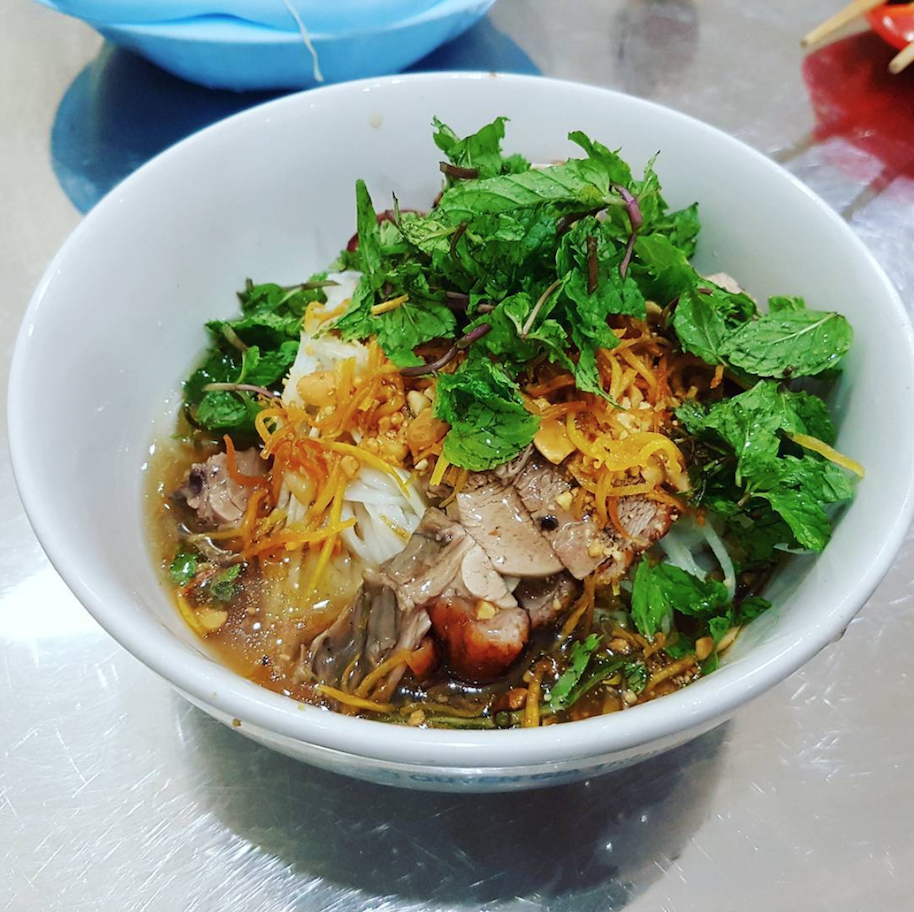
The sour sauce is a very important part of pho chua. Fried shallots, vinegar, garlic, sugar, and fish sauce combine to create the sour taste. But don’t worry if you cannot stand the smell of fish sauce! Because other ingredients will overwhelm it. A while ago, pho chua was only served in ceremonies or weddings. However, now you can eat pho chua in many restaurants or food stalls in Cao Bang.
Xoi Tram Cao Bang
When everything becomes cooler and the heat dissipates a little to make room for autumn, the Tay and Nung people go to the forest to collect Chinese black olives. In this season, locals and travelers can taste the yummy xoi tram, which literally means glutinous rice with Chinese black olive.
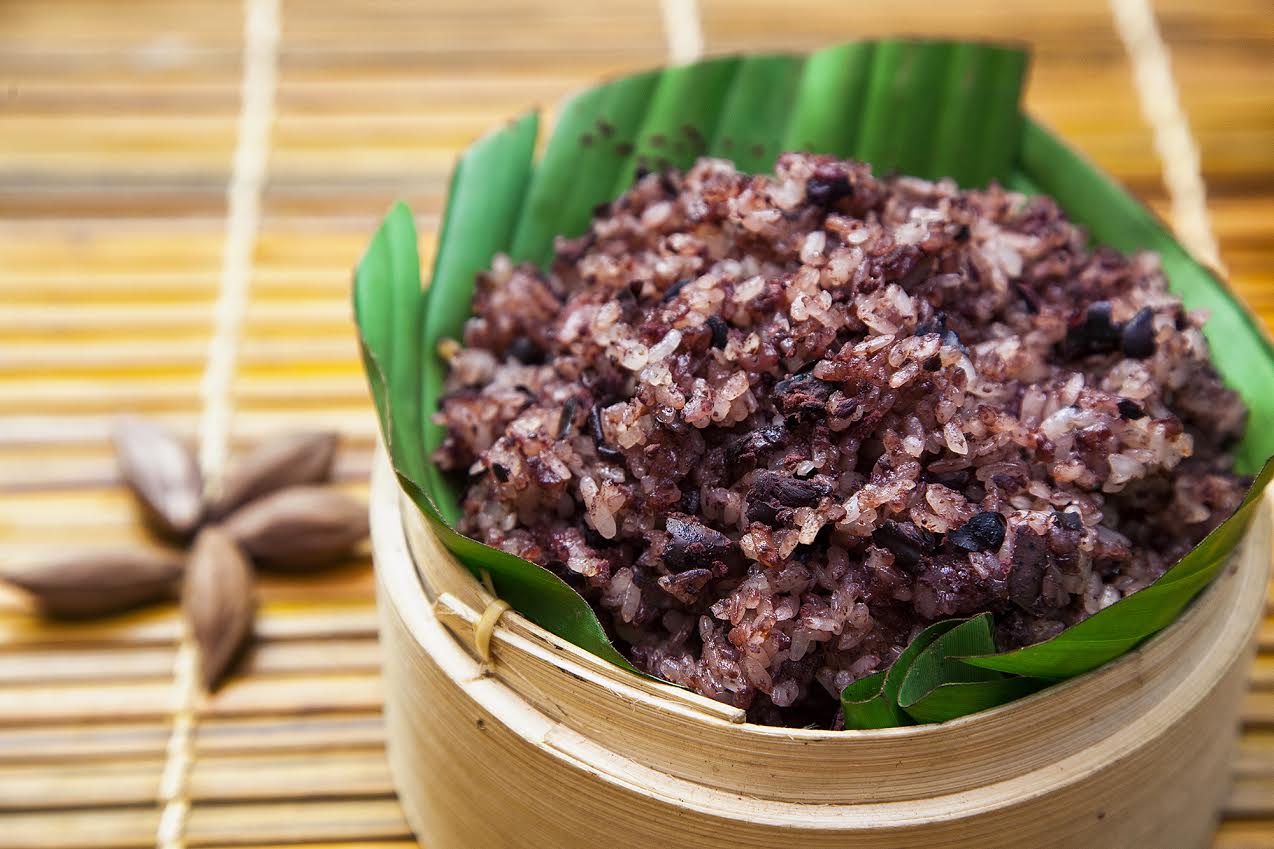
August and September of the Lunar calendar are the olive season. Chinese black olives are soaked in warm water. Then the locals will remove the crust and mix with cooked glutinous rice until the rice turns the color of the olive. People say that you can eat xoi tram all day without getting sick of it.
Banh Khao
Banh khao is one of the very famous specialties of Cao Bang. The main ingredients are glutinous rice, sugar, peanuts, and sesame. When you bite into a piece of banh khao, the sweetness of the sugar, the buttery taste of peanuts and sesame, and the soft glutinous rice cake combine to make a delicious dessert snack that won’t fill you up. The final product is wrapped in colored paper in rectangular shapes.
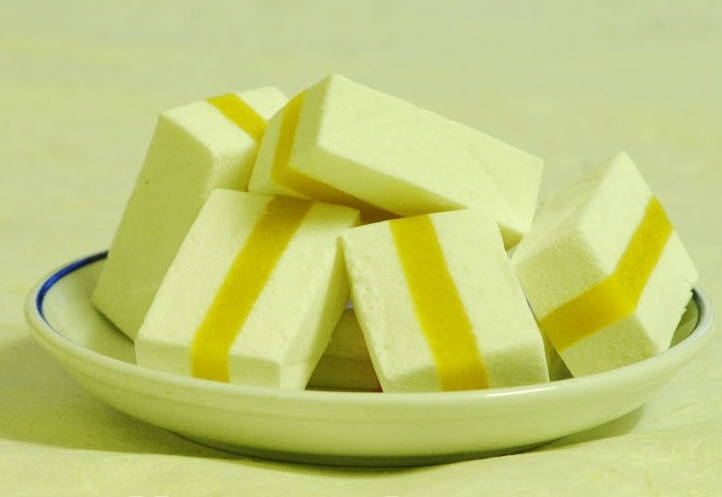
Banh khao is usually made for Tet (Vietnamese New Year). A custom of Cao Bang says that as long as banh khao is in a local home, it’s still Tet vacation. However, you can buy banh khao at any store in Cao Bang.
Lap Xuong Cao Bang
Lap xuong originated from a Cantonese word pronounced laap coeng, meaning dry tripe. This food is also known as Chinese sausage. Lap xuong appears all over Vietnam, but lap xuong in Cao Bang has a distinct taste due to a more complicated recipe.
The pig tripe is cleaned with white wine. The stuffing includes meat from several parts of the pig. After these parts are collected, mince the pork, add a few spices, fried shallots, and a little apple wine to create that very special smell. Then this mixture is tightly stuffed into the tripe and dehydrated under the sun for three days. After that, lap xuong is finished in the kitchen as it is smoked.
The best way to enjoy lap xuong is to fry or grill it, then slice it into thin pieces. You can eat lap xuong with xoi tram.
Banh Che Lam
Banh che lam is a traditional cake of the Cao Bang people. Together with banh khao, banh che lam is usually served during Tet in every house.
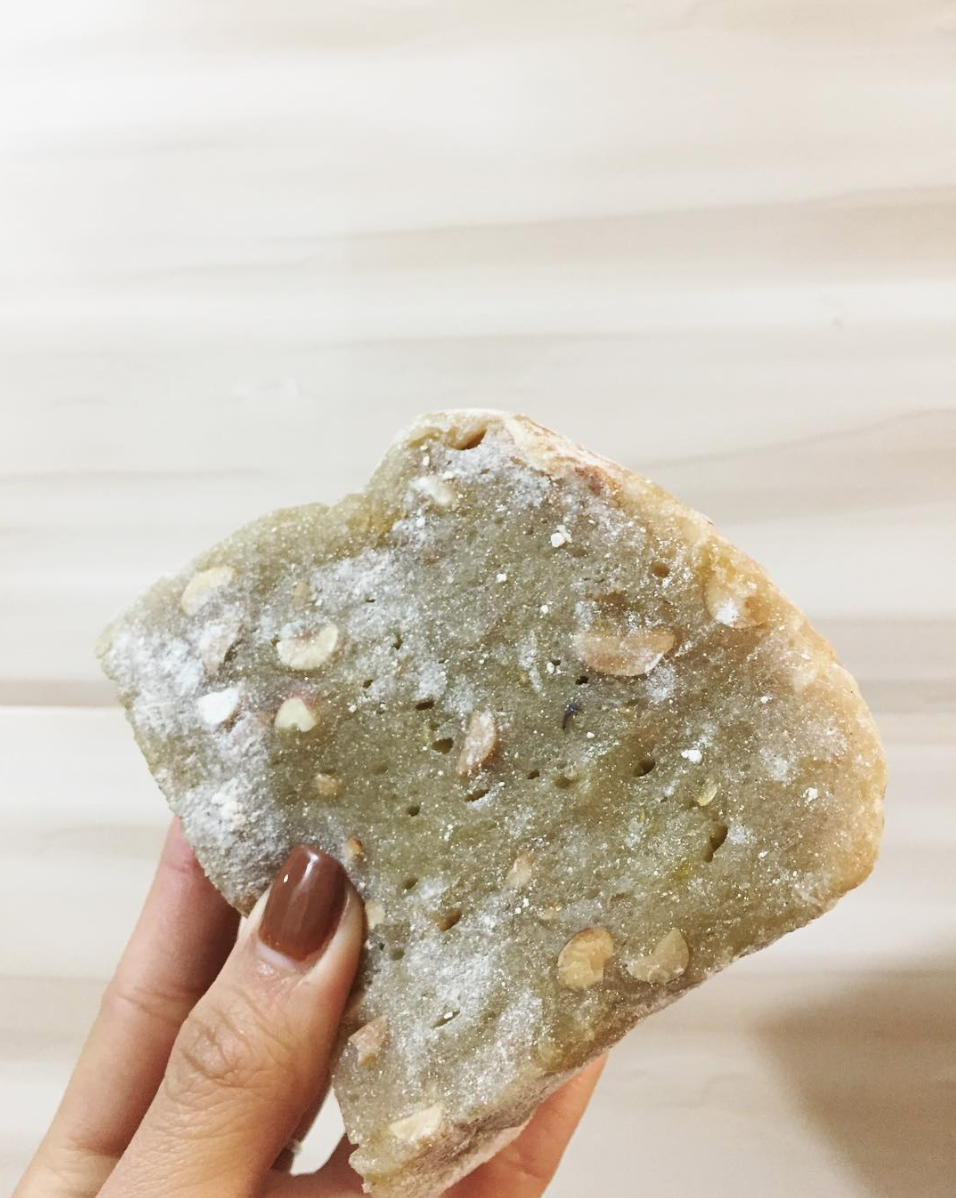
This cake is made of roasted glutinous rice flour, roasted peanuts, ginger, and sugar. But the most important part is the sugar. Locals choose brown sugar, a Vietnamese hand-made sugar with molasses, to cook banh che lam. When eating, brown sugar not only contributes a subtle sweetness, but it also makes the cake sticky. In addition, the buttery taste of peanuts and spice of the ginger will bring you an unforgettable experience. It is said that eating banh che lam and drinking tea is the best combination of food and drink.
Vit Quay Bay Vi
Vit quay bay vi literally means roasted duck with seven flavors. Before roasting the duck, the cook marinates it with seven ingredients: ginger, garlic, shallots, peppers, honey, tofu, and a special ingredient which is Clausena indica, a fruit grown in Cao Bang’s forest.
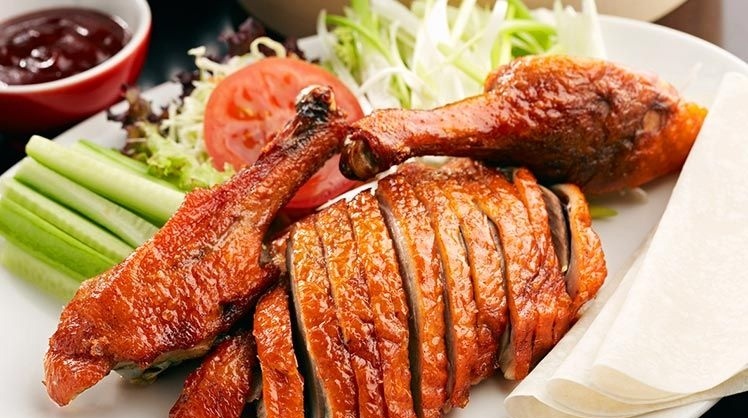
After roasting, the duck is cut into small slices and put on a plate. When eating vit quay bay vi, you should chew slowly to experience the seven flavors of this dish. Try to guess the ingredients as most people do when trying this food for the first time. When travelers return home and try to cook it, they say it never has the same taste as it did in Cao Bang. The reason is the absence of Clausena indica, which only grows in Cao Bang.
Go to Cao Bang, drop by any restaurant and food stall you pass, and try any dish you like. The above dishes are the typical and traditional ones that you can easily find anywhere within Cao Bang, from street, to household store, to luxury restaurant. Let the food add more flavors to your adventure!
Subscribe to our 4U Trip to read more articles about Cao Bang as well as traveling in Vietnam. Here are a few more articles:
Everything About the Buckwheat Flower Season in Ha Giang
Guide to Ban Gioc Waterfalls & Nguom Ngao Caves
Visit The Tay People And Understand Their Culture: A Cao Bang Adventure
